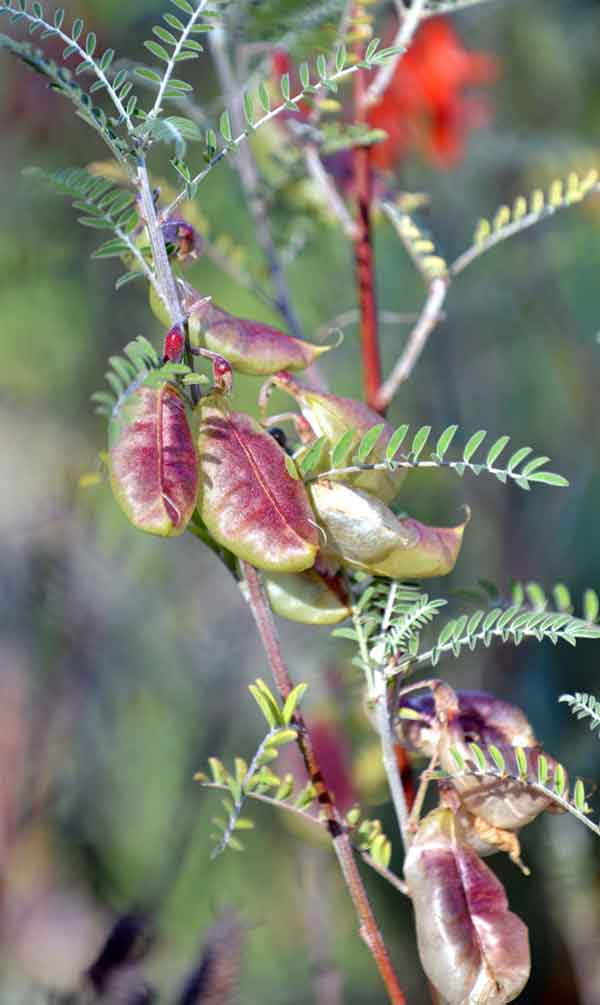Pods on a Pea
This article was first published on 12 Mar 2014.

Sutherlandia frutescens
At first glance the balloon pea flower could be mistaken for New Zealand’s native kaka beak. Both form a lax, upright shrub, have symmetrical pinnate leaves, and clusters of bright red pea-like flowers. The seed pods however, are quite different.
The last flowers of Sutherlandia frutescens fade as autumn approaches. In its natural habitat in South Africa, sunbirds often fulfil the job of pollinating the flowers. Bees and other insects must do the trick here, as the fertilised flowers are now developing into large, inflated seed pods.
The papery bladder-like cases are almost transparent - green at first, turning russet. Dispersed by wind, the little balloons can float on the breeze for some distance. Another lesser means of dispersal is practised by South African children - floating them on the water in a make believe game of ducks or geese.
Sutherlandia has traditionally been used in South African medicine for centuries for a variety of ailments. Today there is a lot of research into use as treatments for cancer and HIV.
Early explorers were captivated by the scarlet flowers and unusual pods, and it has been grown as an indoor ornamental plant in Europe since about 1680. It grows in Dunedin Botanic Garden’s rock garden in the border adjacent to Lindsay Creek, where the soil is very well drained. In a sheltered place in Dunedin it will over-winter, however it can be treated as an annual, with seeds being able to be collected to grow new plants for the spring.
Robyn Abernethy is the Rock, Water & Alpine Collection Curator at the Dunedin Botanic Garden.


